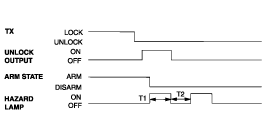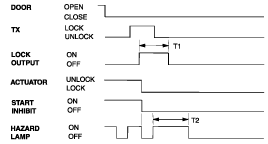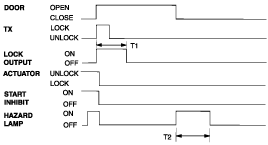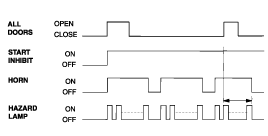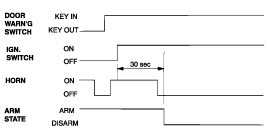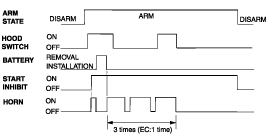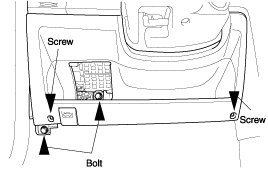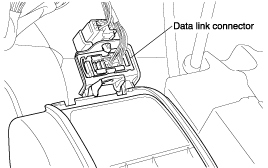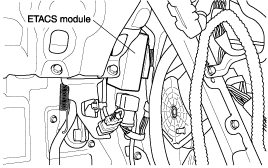ARM FUNCTION
Pressing the remote key lock button will result in a 0.5-second pulse issued to lock all doors.
Pressing the remote keypad unlock button once will result in a 0.5-second unlock pulse issued to unlock all doors.
As part of the arming sequence the alarm first enters a pre-armed state before falling into the armed state. During this pre-armed state alarm triggers are ignored. Pre-armed state can be reached from the alarmed state, the start inhibit state or the disarmed state. Pre-Arming of the alarm can be achieved by a press of the lock button on the remote key.
In the pre-armed state the visible and audible warnings are disabled.
This system enters the armed state if it is in the pre-armed state and, after 0.6 sec, check actuator lock and each door, hood and tail gate close, and no door warning switch (no key in ignition).
On entering the arm state, a single flash of the hazard lamps is given, period of cycle 2 second, duty rate 50%.
If TX lock signal is received when a door, tail gate or hood is open, then lock output is given and a flash of hazard is not given.
After the armed state is entered, if a lock signal is received then a single flash of the hazard lamps is given, period of cycle 2 second, duty rate 50%.
The armed state cannot be reached by locking the car with the keys.
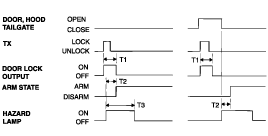
Time specification
T1 : 0.5 sec.
T2 : Max. 2 sec.
T3 : 1.0 ± 0.2 sec.
